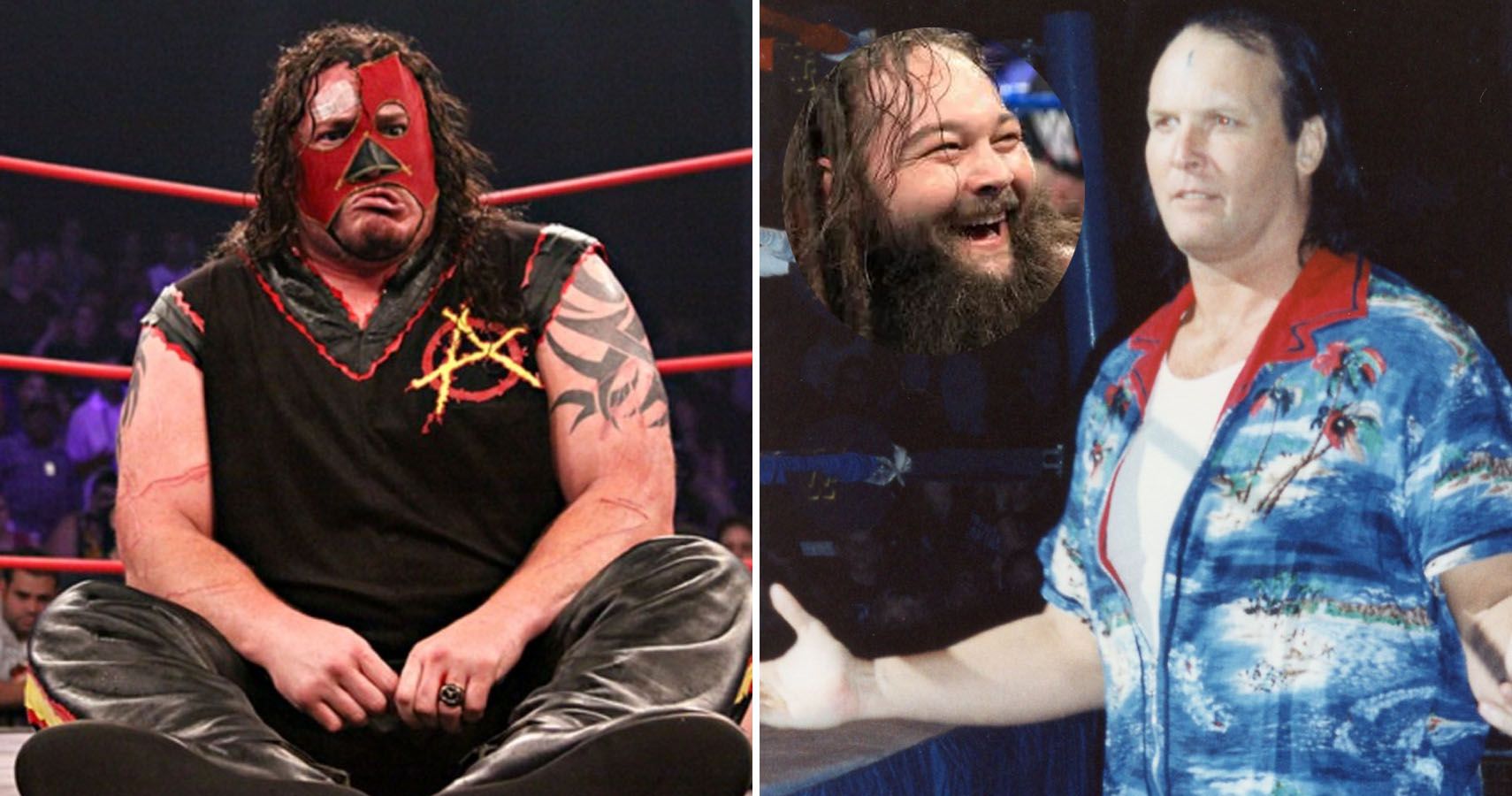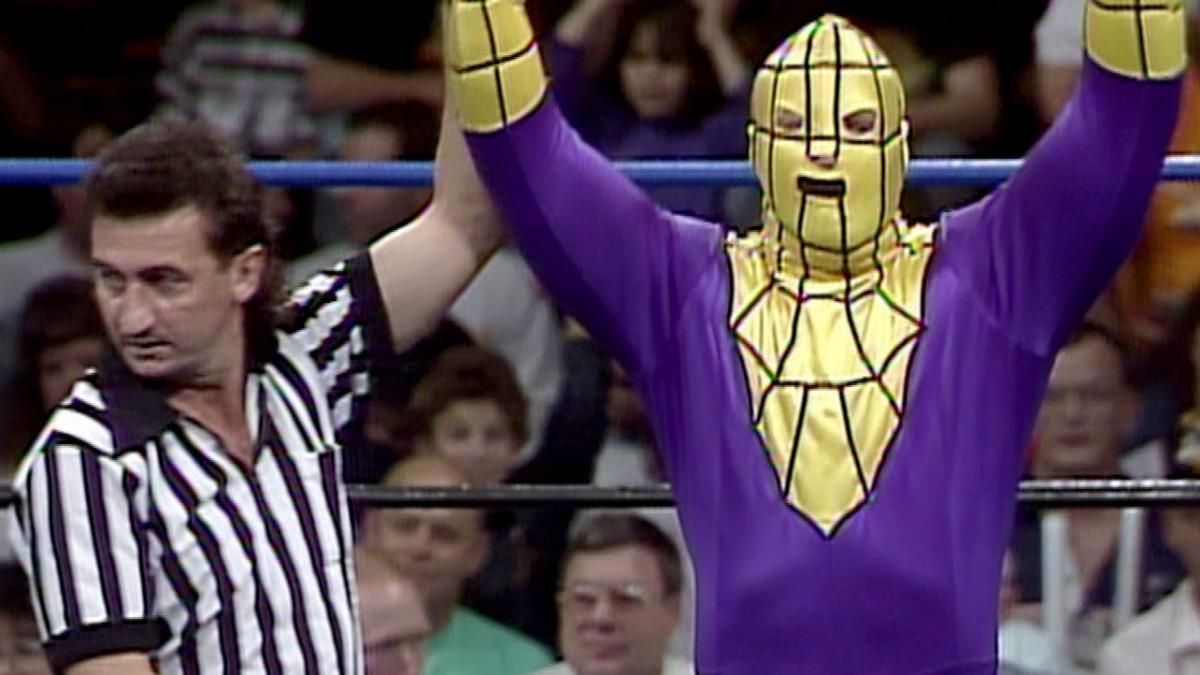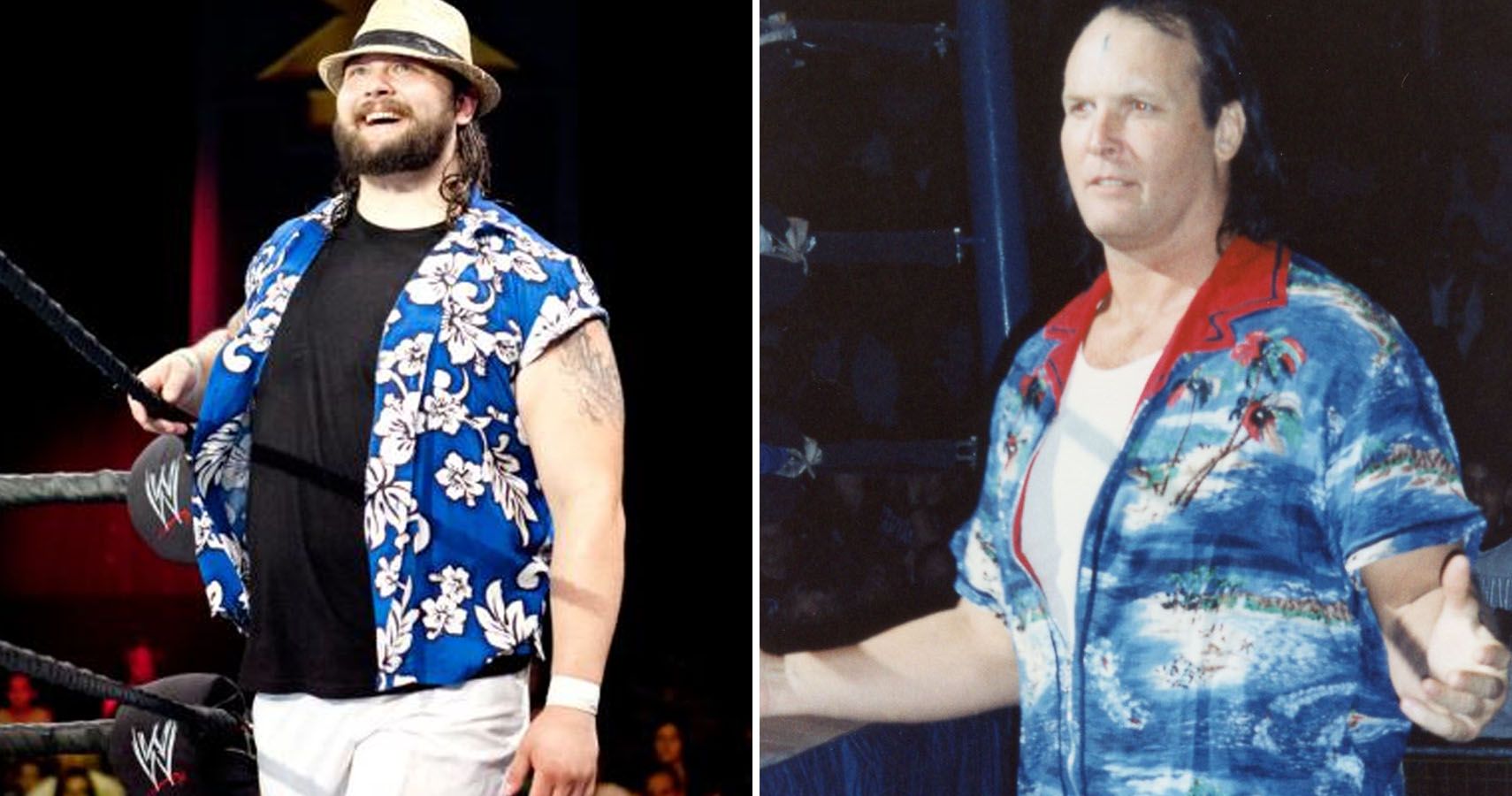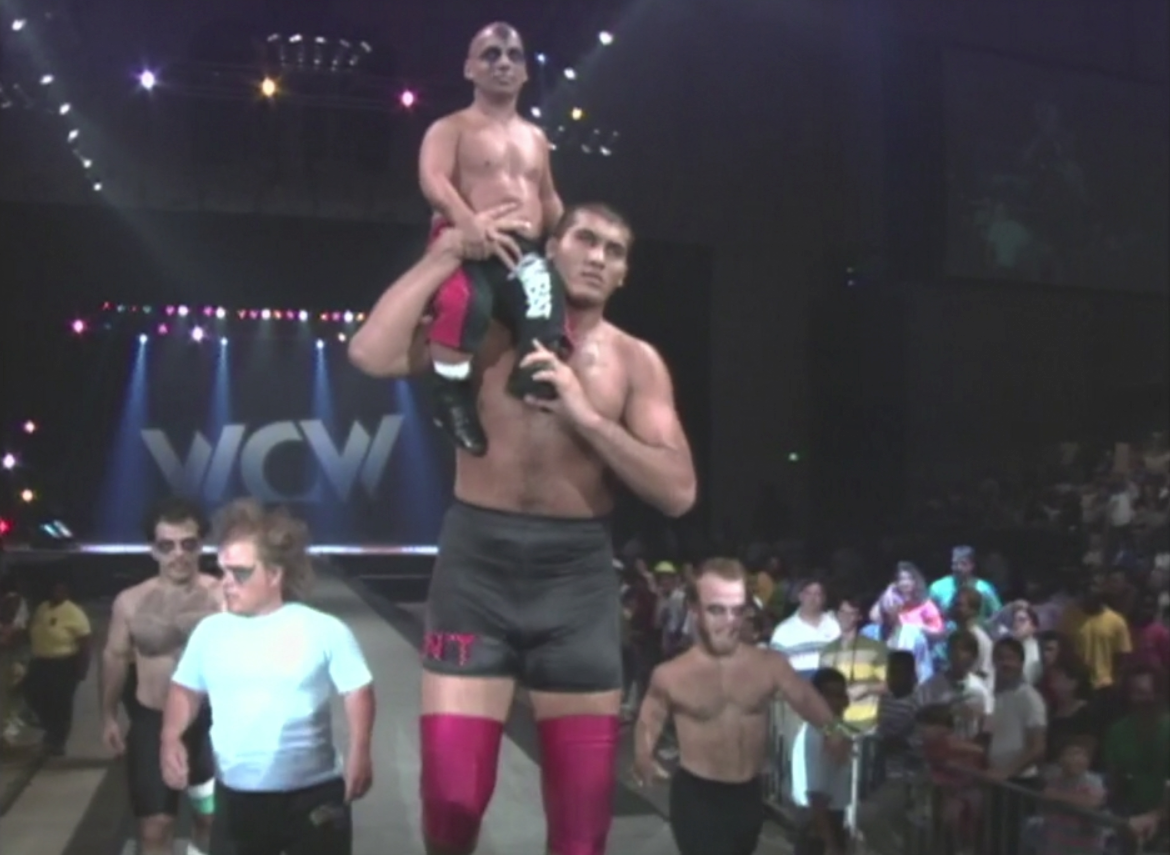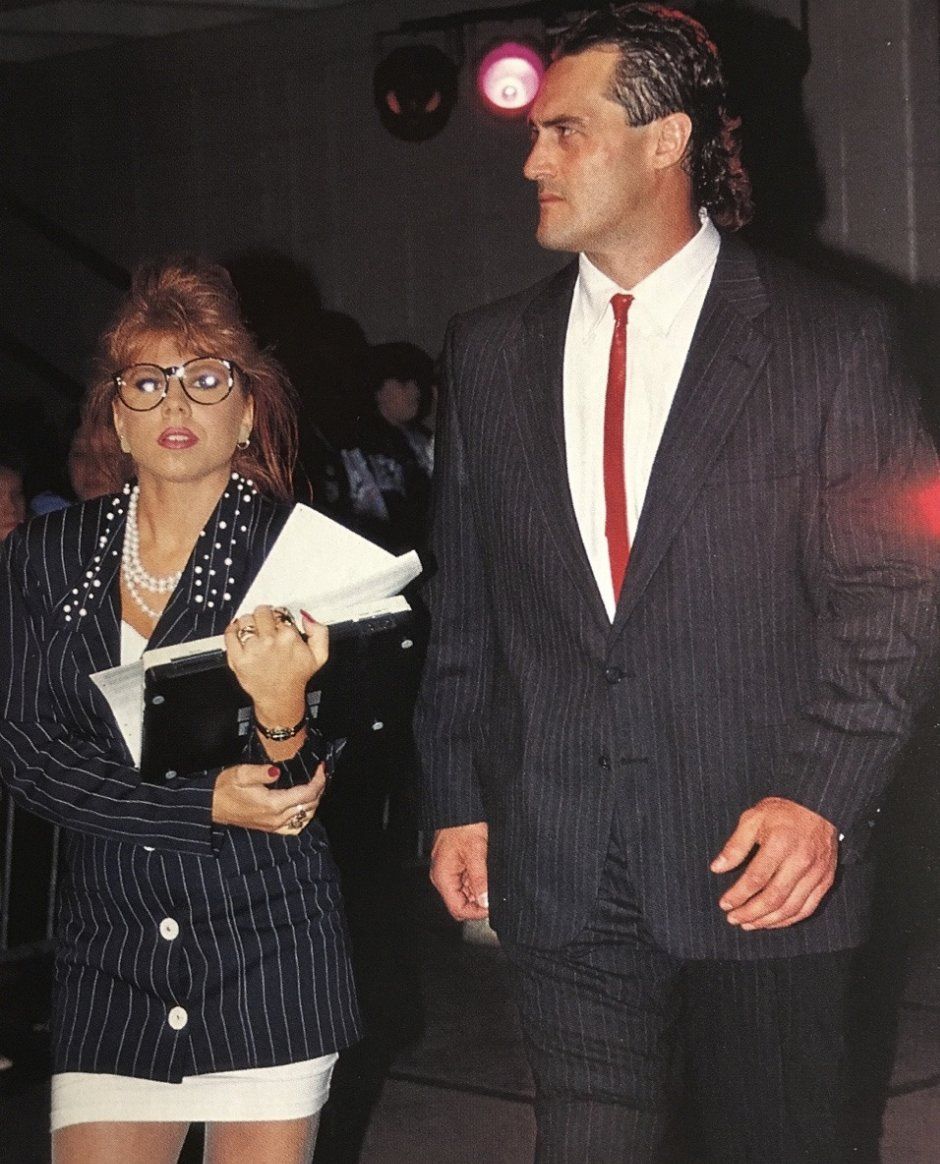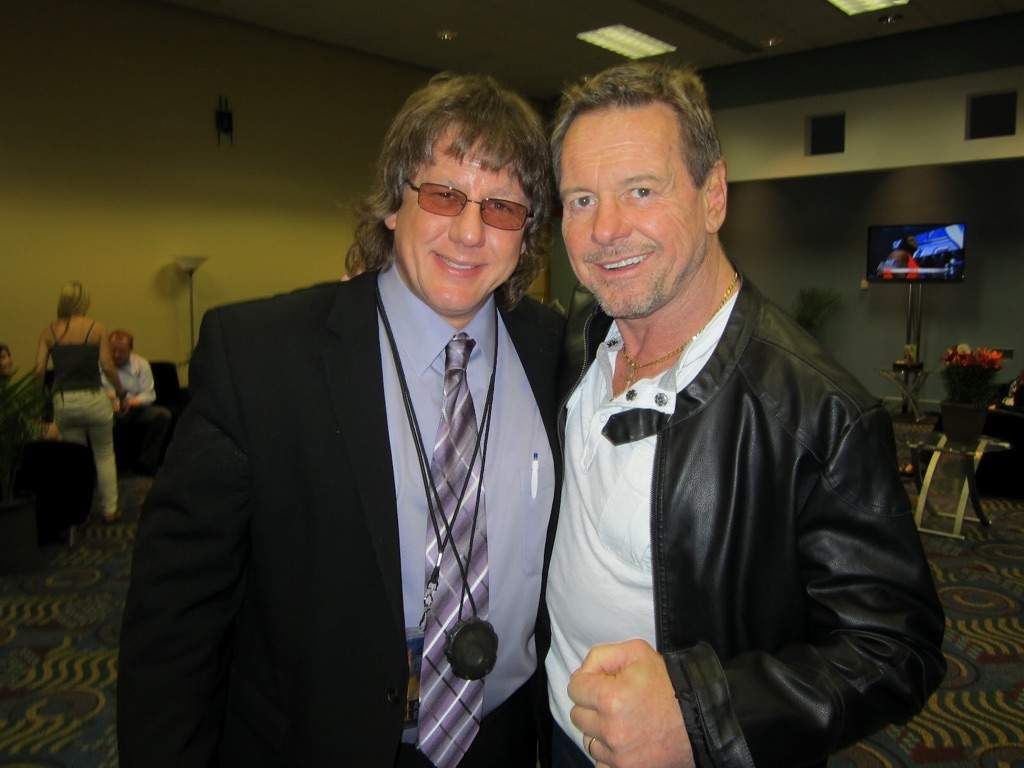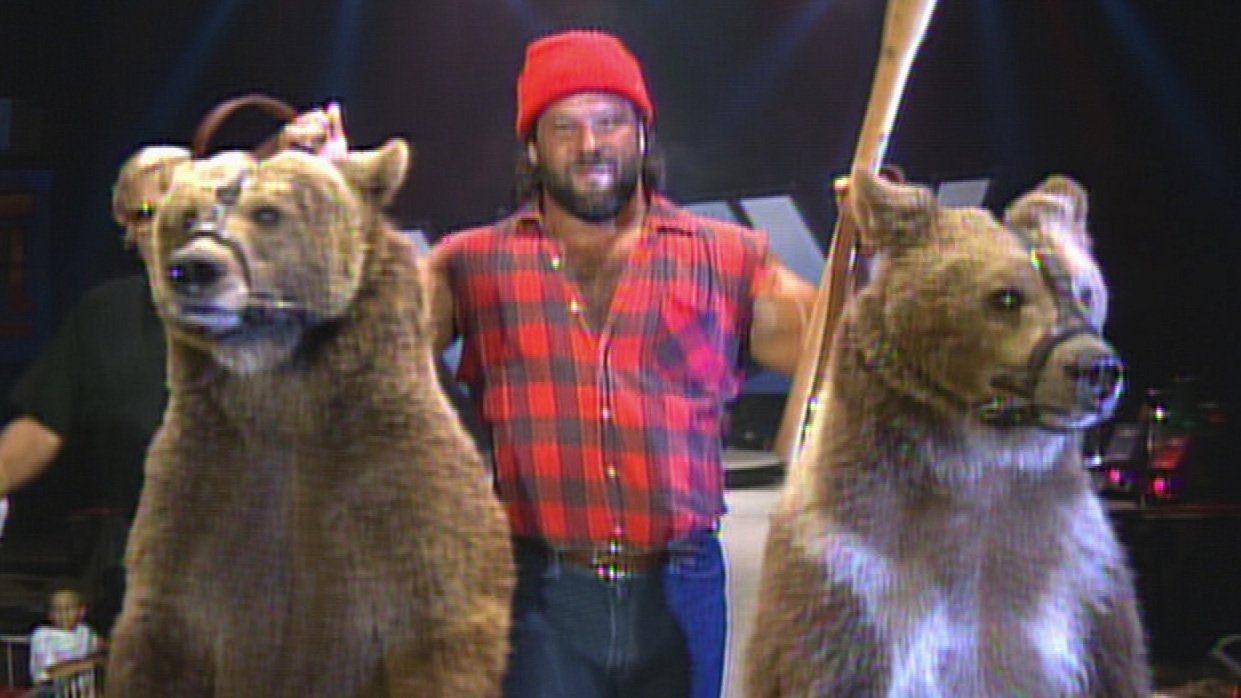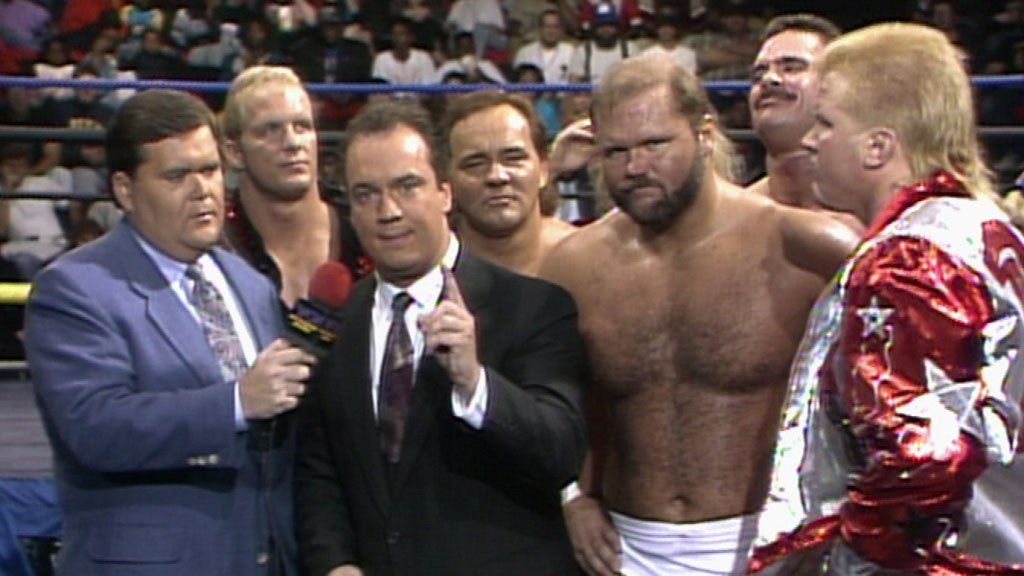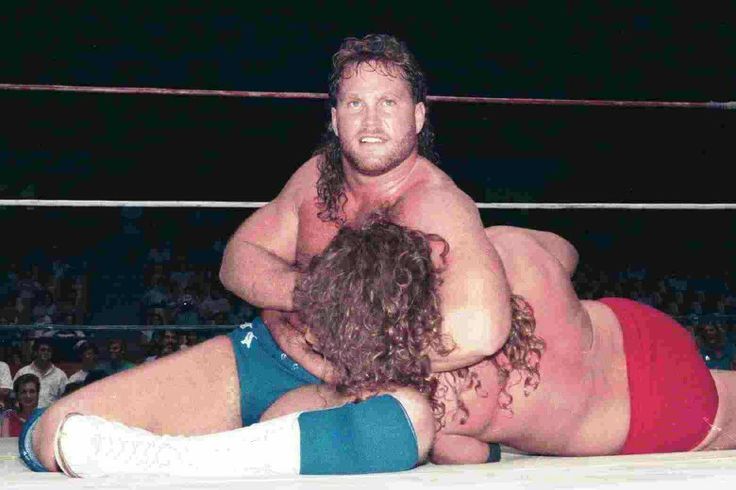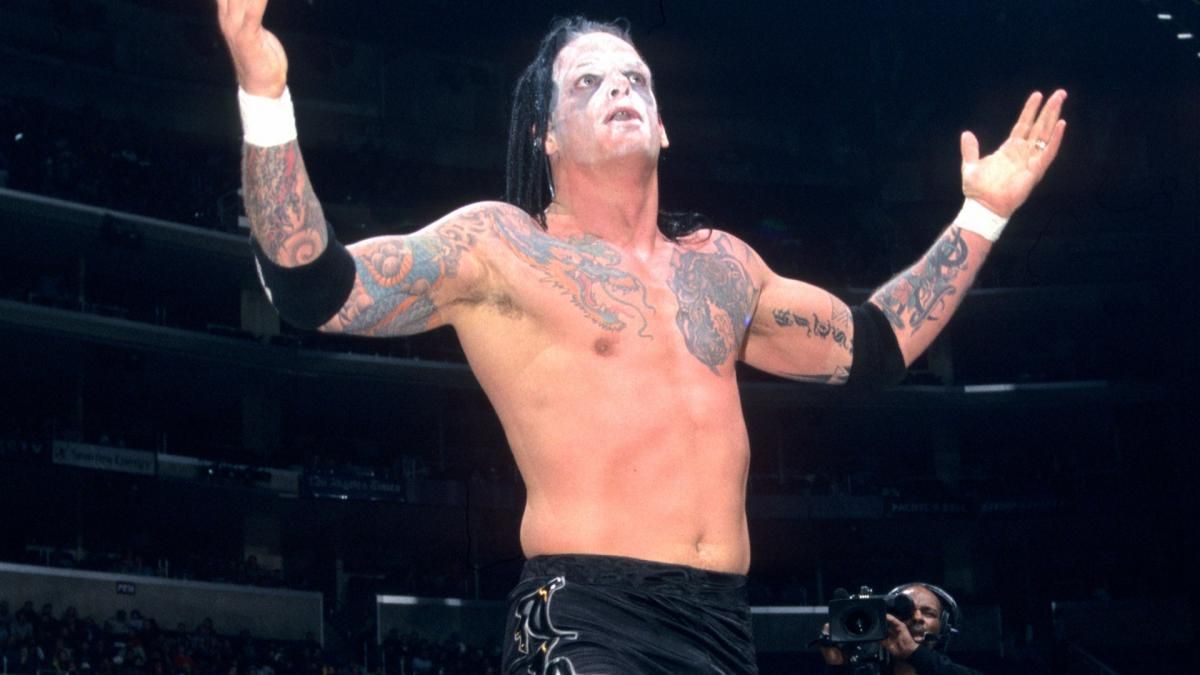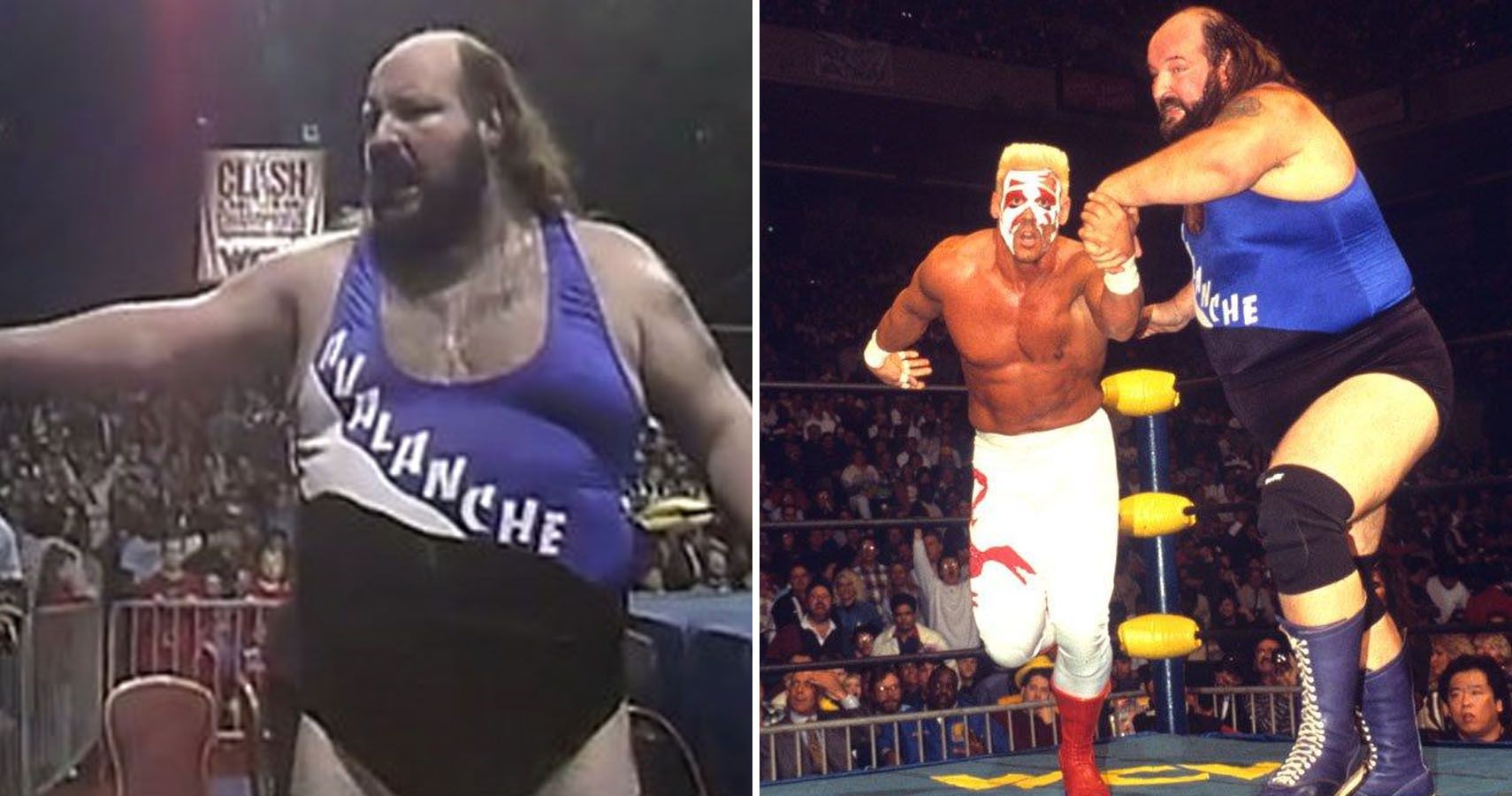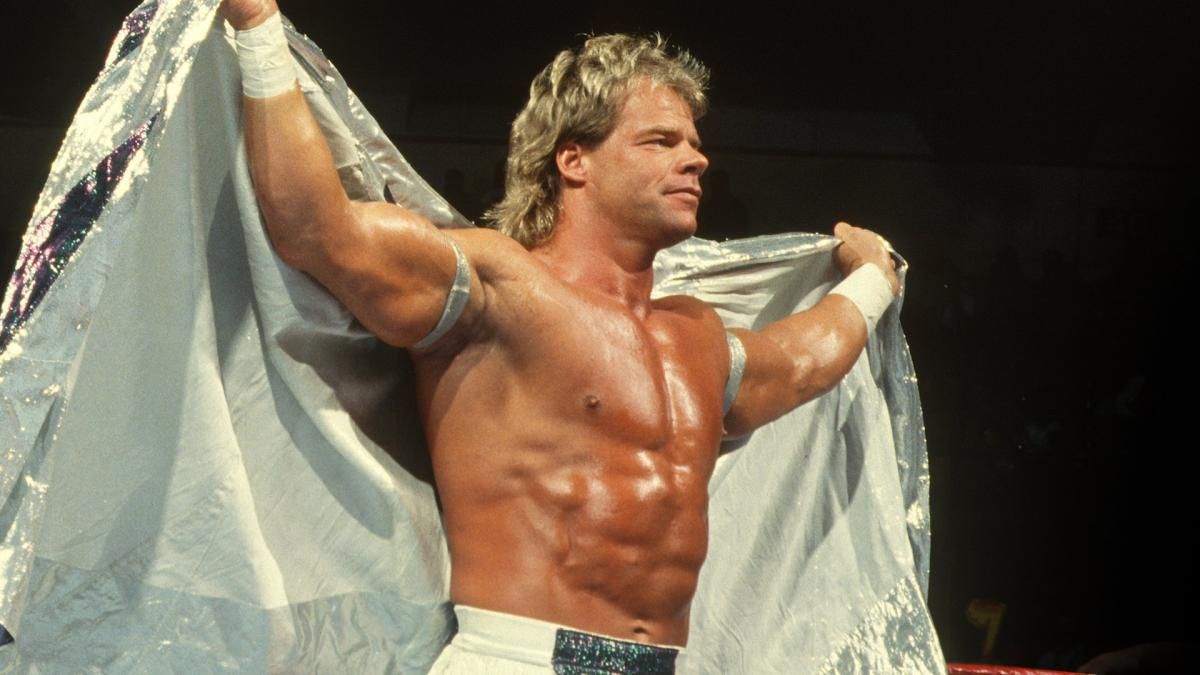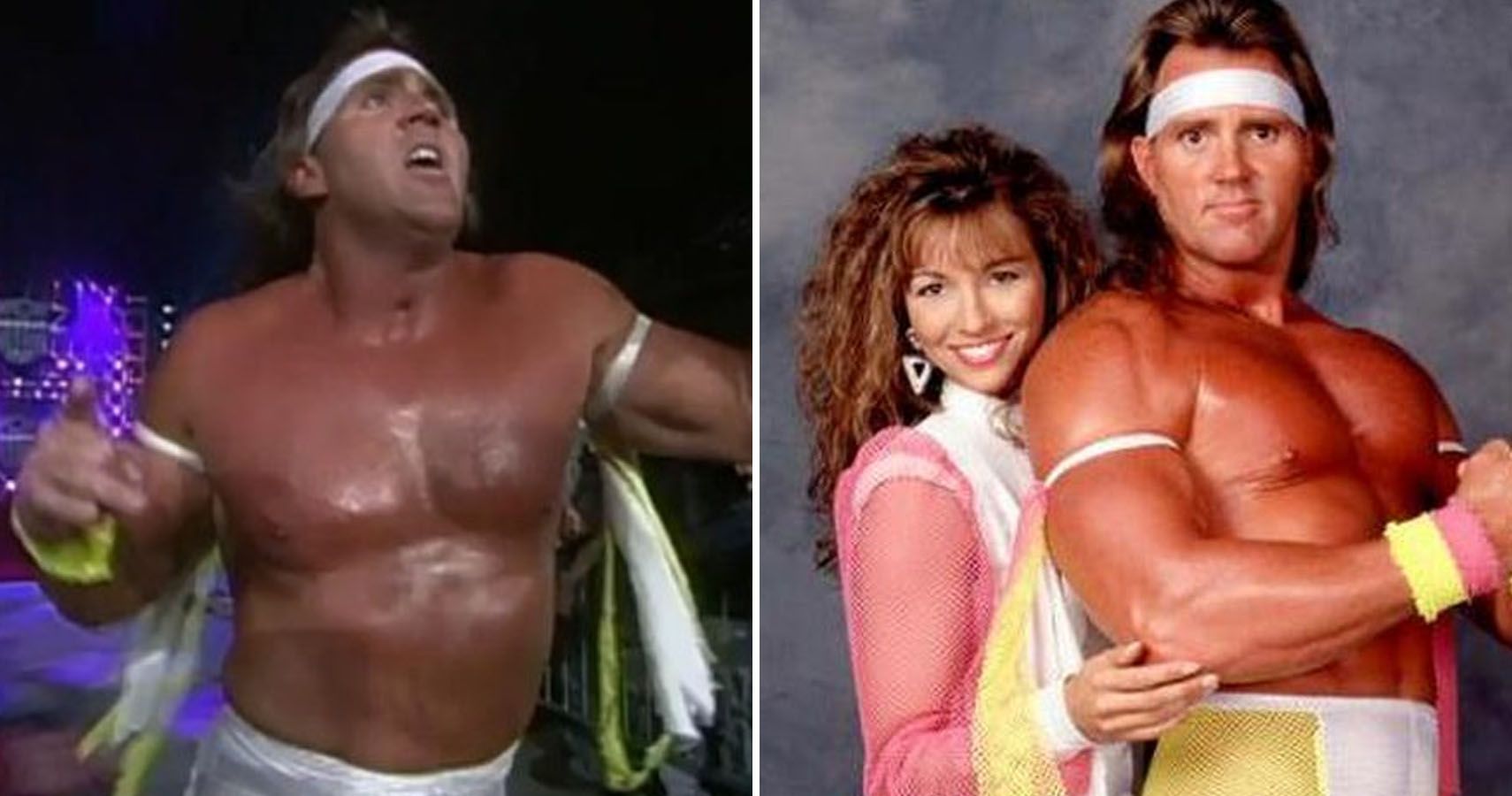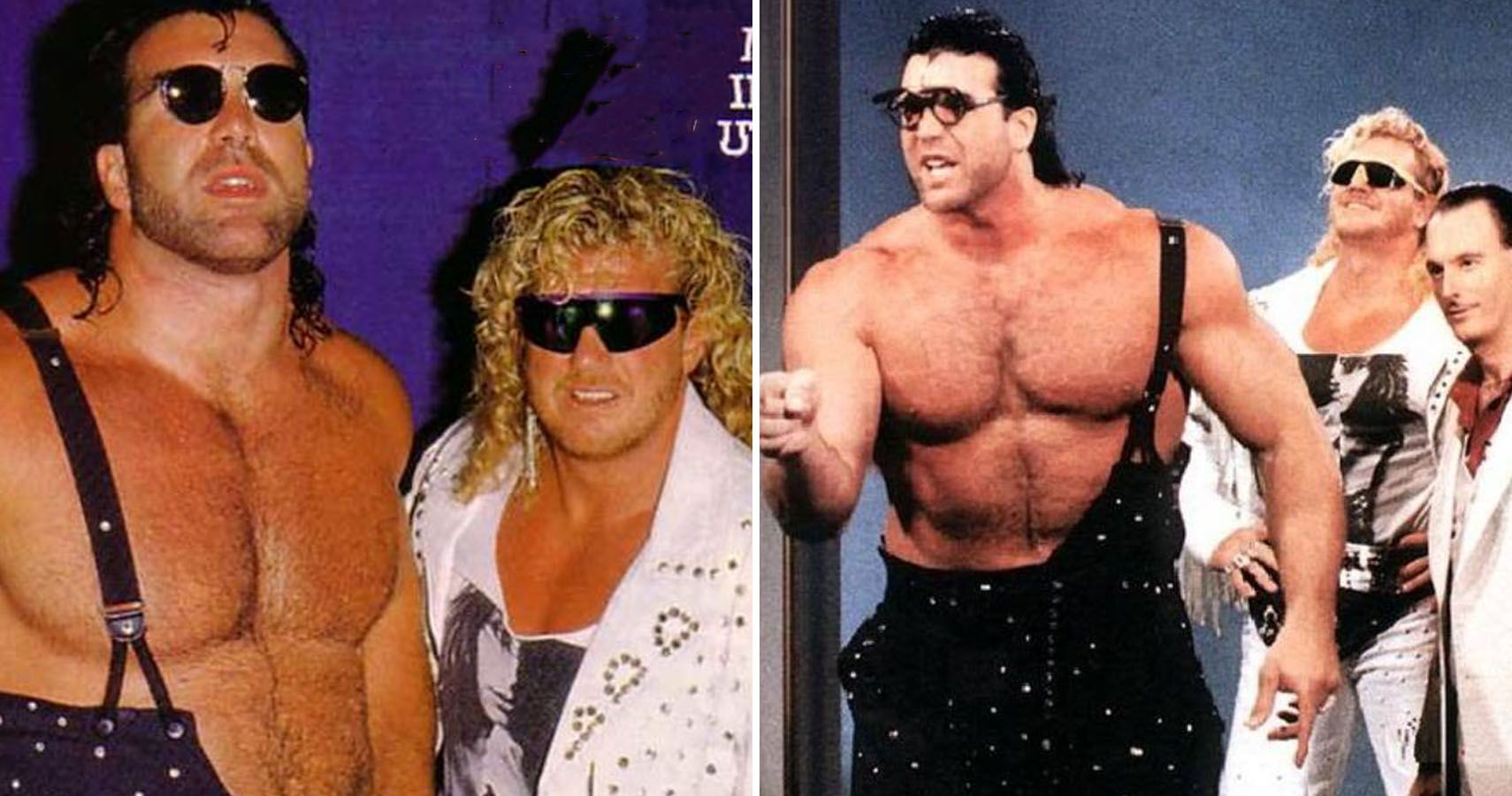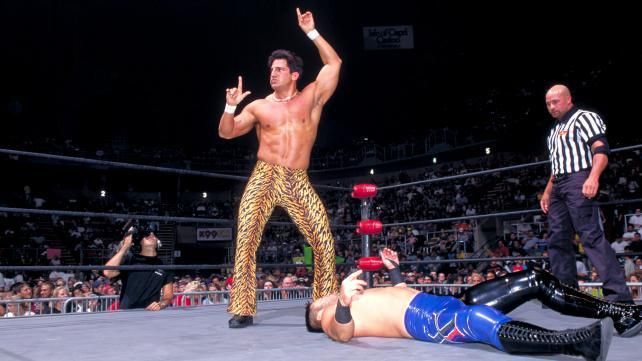There was a time that wrestling companies from all over the world were ripping off WWE's ideas. Perhaps the guiltiest party was WCW during the early 1990s. A variety of ill-conceived characters and rehashed ideas plagued the WCW product. It isn't just WCW that has aped the WWE's product over the years. Although the company may have done it more than most, TNA, New Japan and a variety of indies have done it too. Just look at the ridiculous amount of indies that have copied the WWE's Titan Tron in their own way. It is completely uninspired as companies like Ring of Honor and Impact try to emulate the WWE's ringside set.
While many of the gimmicks and ideas companies ripped off have been cringe-worthy, there have been times that it has paid off. It has been said countless times before that everything in the wrestling business has been done to death. Therefore, taking something another promotion did previously and expanding on it can be very successful.
More often than not, the WWE has put itself in a position to take the best ideas from everyone else and build from it. Whether it has been signing wrestlers, taking gimmicks or storylines, the WWE has typical lifted from others. But what happens when a company rips off the WWE?
24 Uninspired: The Renegade
Richard Wilson, also known as WCW's The Renegade, is a sad story. A good looking, well-built guy, Wilson had worked as a male stripper. However, after seeing wrestling on TV and having a similar physique, he decided to seek out training with Killer Kowalski. The trainer was the same man that taught Triple H and Chyna, and Wilson trained around the same time. Between 1991 and 1994, Wilson worked indies in New England and in Japan. Then, as fate would have it, he met Hulk Hogan. According to folklore, Wilson and Hogan met at a gym and the former's resemblance to the Ultimate Warrior inspired the Hulkster to take him to WCW. Hogan was in the middle of a feud with Ric Flair and Vader.
Many fans believed Hogan would deliver o The Ultimate Warrior to WCW after stating he had an "Ultimate Suprise" for Vader. Instead, The Renegade was announced during Uncensored '95 and fans were left confused. At first, they cheered until they realize it was just an Ultimate Warrior knockoff. Not only did The Renegade look like The Ultimate Warrior from afar, but he even did the same rope running and shaking. Although he would go onto win the WCW World TV Title, The Renegade's push was quickly stopped. In December 1998, The Renegade worked his last match for WCW. Two months later, depressed over his wrestling career and the sudden stop his rise to superstardom experienced, Wilson committed suicide.
23 Did Well: Bullet Club
The N.W.O. changed professional wrestling. However, D-Generation X upped the ante with the group's no holds barred promos. The original group consisted of Shawn Michaels, Triple H, Chyna and Rick Rude. But it is the second version that is the most iconic DX incarnation. It featured Triple H, X-Pac, Road Dogg and Billy Gunn. When the Bullet Club debuted in New Japan Pro Wrestling in 2013, the group resembled DX far more than the N.W.O. The Biz Cliz did ape mannerism from both groups as it become a heel faction like never before seen in Japanese wrestling. Since the group debuted over five years ago, the Bullet Club is no longer the cutting-edge stable of heels it once was. In fact, the Bullet Club is just a t-shirt and has little meaning in wrestling and angles now.
The Bullet Club may have been a rip off of DX, and the N.W.O., but it has outstayed its expected shelf life.
Of course, in the 1990s, WCW fans were begging for the N.W.O. to finally come to an end. However, the day never came, the group just kept getting resurrected. Now, the Bullet Club doesn't appear to ever have an end in sight. Whether it is because New Japan's bookers can't figure one out or they just love the incredible amount of money that continues to be made on merchandise, it appears the Biz Cliz will outlast the factions it was based on. It is still inspired, but could move to uninspired soon.
22 Uninspired: Arachnaman
Brad Armstrong received another terrible gimmick makeover by Jim Herd and WCW's executives in 1991. Just a year prior, he had been given The Candyman persona. Shortly after the gimmick flopped, Armstrong was put under a mask as a member of the Fabulous Freebirds with Michael "P.S." Hayes and Jimmy "Jam" Garvin. The group won the WCW Six-Man Tag Titles. Near the end of 1991, Armstrong debuted a new gimmick Arachnaman (official WCW spelling). The gimmick wasn't a direct rip off of the WWE, but again, it had the company's kid-friendly presentation in mind. In fact, Arachnaman was more of a rip off of Marvel's Spider-Man.
Armstrong had a similar looking suit and even shot webs out of his hands. The webs were party streamers and fans would be bathed in them, sort of. At least that was the idea. The geniuses at WCW didn't foresee Marvel getting upset with the company's Arachnaman gimmick despite the character looking very much like Peter Parker's superhero persona. WCW dropped the character within weeks after Marvel contacted them and threatened a lawsuit. Armstrong was back to being himself, although more gimmicks from WCW would come his way in the future. Interestingly, Armstrong later said he "loved" portraying the Arachnaman gimmick. He may have been speaking sarcastically.
21 Did Well: Bray Wyatt
The WWE ripped itself off when Bray Wyatt debuted in 2012. The gimmick was Windham Rotunda's second chance at a WWE main roster career. He had previously worked under the gimmick Husky Harris, but after a short run, it got him sent back down to developmental. While there, Rotunda came upon old WWE wrestler by the name of Waylon Mercy. The gimmick was used by Danny Spivey 1995 and it was based off of Robert De Niro's character Max Cady in Cape Fear. Unfortunately, Spivey was forced to retire due to injury, and Mercy was put to rest.
The Bray Wyatt gimmick is very much like Spivey's Waylon Mercy, but it has been turned up to 11.
While Mercy was subtle, Wyatt is far more in your face. Since undergoing his gimmick change as Wyatt, Rotunda has become one of the top stars in the WWE. Just six years ago, it looked like his days in the company were numbered. Now, he is a top draw on the WWE's shows around the world. Although 2017 wasn't the gimmick's best year – the Wrestling Observer Newsletter voted Wyatt as part of the Worst Feud of the Year and Worst Match of the Year – it is still one of the best going in the WWE. After six years, however, the gimmick may not have much life left to live.
20 Uninspired: El Gigante
In 1988, the Atlanta Hawks drafted center Jorge Gonzalez. The 8ft tall basketball player became the first player from Argentina to be selected in the draft. However, Gonzalez couldn't cope with the NBA's standard of play and injuries quickly derailed his career. So, what do you do with an 8ft tall Argentine? You try to make him a professional wrestler. After failing to make the cut with the Hawks, Gonzalez was transferred to WCW. Ted Turner owned both the Hawks and the wrestling company, so why not try to turn Gonzalez into a top babyface? Now known as El Gigante, the company attempted to push the very green wrestler as a kind, lovable grappler. It wasn't too different to the way Andre The Giant had been pushed in the 1980s before turning heel on Hulk Hogan prior to WrestleMania III.
El Gigante was pushed hard and aligned with the WCW's top babyface Sting during his run. The giant wrestler feuded with WCW's top heels including Ric Flair, Vader and Cactus Jack. El Gigante's biggest problem, other than being green, was his inability to move around the ring and he looked incredibly clumsy. In 1993, he left WCW for WWE and became The Giant Gonzalez. He is remembered more for his WWE run than his time in WCW thanks to a terrible feud with The Undertaker. The duo wrestled two awful pay-per-view matches at WrestleMania IX and SummerSlam 1993, respectively.
19 Did Well: Colonel Robert Parker
Colonel Robert Parker was the alter ego of a longtime wrestler and booker Robert Fuller. In 1993, Fuller joined WCW as Sid Vicious' manager. The two had been friends for years, and Vicious brought Fuller in as the latter was nearing the end of his wrestling career. Fuller had just come off of his last major run in Smoky Mountain Wrestling, and his new gimmick took his fantastic promo abilities and gave it a cartoonish element. It can be argued that the Parker gimmick had a resemblance to Jimmy Hart. However, Parker was far more over the top and goofy than the WWE's secondary manager.
On an episode of Terry Garvin Sims' World Domination podcast, Fuller stated WCW executives had script writers preparing dialogue for the company's managers. Despite having a promo written for him, Fuller pitched an interview to booker Dusty Rhodes in the Colonel Parker character. Rhodes loved it and told him not to use the scripts that were prepared for him. After managing Vicious for a short time, Parker began a faction known as The Stud Stable. It featured Terry Funk, Bunkhouse Buck (Fuller's real-life cousin), Arn Anderson and others. Fuller has said the Colonel Parker gimmick and his time in WCW were the most fun he had in his career.
18 Uninspired: Terrence Taylor
Terry Taylor has long claimed the "Million Dollar Man" gimmick was destined for him. The only reason Ted DiBiase got the gimmick instead was due to having an earlier meeting with Vince McMahon. Taylor is the only person to ever make this claim and he has been lampooned by many wrestling insiders due to his belief. So, what do you do if you can't be the "Million Dollar Man"? You steal the gimmick and make it look second rate.
Taylor joined WCW in 1990 after his failed WWE run as the Red Rooster. Shortly after signing, Taylor joined the York Foundation stable and changed his name to Terrance Taylor. Now, the former UWF World TV Champion came to the ring wearing a "Million Dollar Man" type tuxedo that he would strip off when it was time to wrestle. Taylor also began calling himself "The Taylor Made Man". Unable to receive the gimmick he believed was for him, Taylor created his own watered-down version at a time when WCW was struggling to be relevant. The gimmick just made WCW look like a promotion copying the far more successful WWE, which at times, it was. Despite the gimmick infringement, DiBiase and Taylor have been friends since their time in Mid-South in the 1980s.
17 Did Well: Tom Prichard
Tom Prichard didn't ape "Rowdy" Roddy Piper in a way many wrestling fans would really notice. He didn't wear a kilt or play the bagpipes, Prichard took something many wouldn't realize unless they really paid close attention. The veteran of southeastern wrestling companies patterned his speech and vocal delivery after Piper. Fans could be forgiven if they believed they were listening to Piper and not Prichard during interviews, especially if they closed their eyes. Regardless of imitating Piper's promo style and speech patterns, Prichard was a star in his own right. The wrestler's most famous moment in the ring came in 1988 during his feud with "The Dirty White Boy" Tony Anthony in Continental Championship Wrestling.
Prichard was tricked into a confrontation with Anthony's valet only to be jumped from behind. Anthony tied a rope around Prichard's neck and hanged him over the top rope. It has become an iconic angle for hardcore wrestling fans. Prichard later became a member of The Heavenly Bodies in Jim Cornette's Smoky Mountain Wrestling. After it closed, he joined the WWE as Zip of the Body Donnas. Following the team's demise, Prichard became the WWE's head trainer. The former SMW Tag Team Champion trained The Rock, Mark Henry and a number of other WWE Hall of Fame wrestlers.
16 Uninspired: Big Josh
Big Josh was another WCW attempt at a kid-friendly gimmick during the early 1990s. The gimmick was portrayed by ring veteran Matt Borne, who had gained a reputation as a great worker in the business. He had appeared on the WrestleMania I card and Borne was a veteran of the territories. He had also polarized locker rooms and made plenty of enemies in the business. As Big Josh, Borne wasn't too different than the WWE's Hillbilly Jim or "Hacksaw" Jim Duggan. He was a friendly fan favourite that came to the ring carrying his trusty tree chopping axe handle. Big Josh was even accompanied by live bears at one WCW pay-per-view.
The gimmick was goofy and felt unnatural in its kid-friendliness.
Compared to Duggan, Borne didn't seem capable of pulling off such a fan friendly character. His in-ring work was solid and fans got to see some of the moves he took to the WWE in 1993 as Doink The Clown. Making Borne's ability to play a kid-friendly gimmick difficult was his outside the ring behaviour. Struggles had long been in Borne's life for years by the time he got to WCW. In 2013, his struggles took Borne's life prematurely.
15 Did Well: Dangerous Alliance
Bobby "The Brain" Heenan's stable in the WWE was iconic. The manager had several incarnations of his Heenan Family and all of them had wrestlers that were at the top of the card. Needing a strong heel stable in WCW in 1991, the company gave Paul E. Dangerously a flock of top wrestlers to lead. The group consisted of Arn Anderson, Larry Zbyszko, Bobby Eaton, Madusa, Steve Austin and Rick Rude. It was a who's who list of heel wrestlers in WCW. Although the faction would disband in late 1992, the Dangerous Alliance left an indelible mark on the promotion.
The stable's greatest moment came at WrestleWar 1992. The main event featured the Dangerous Alliance competing against Sting's Squadron (Sting, Barry Windham, Dustin Rhodes, Ricky Steamboat and Nikita Koloff) in a War Games match. It was bloody and brilliant, as the 10 grapplers brought back memories of the company's precursor Jim Crockett Promotions. Sting's Squadron won the bout after a mix up between Eaton and Zbyszko. WCW broke up the group a few months later, and each wrestler went on to a new storyline. Dangerously left WCW and helped turn ECW into the 1990s cult phenomenon it would become.
14 Uninspired: Candyman
In September 1990, Jim Herd had another revelation and he believed it would bring children to WCW shows. His idea was to rechristen one of the best workers he had into a joke character that handed out candy to fans sitting ringside. Brad Armstrong, the first son of the famous Armstrong wrestling family, was renamed The Candyman. It would turn out to be just another in a line of awful gimmicks saddled on a wrestler that never needed a gimmick. The Candyman wasn't necessarily a character directly aping on a WWE gimmick, but it wasn't too far off from Brutus "The Barber" Beefcake or Jake "The Snake" Roberts in theory.
A cartoon character created to get fans excited, Tony Schiavone humorously pokes fun at Herd and his constant desire to have The Candyman gimmick on his Whatever Happened podcast. It was another example of a wrestling outsider coming into the business and believing they knew what would work. A WWE-lite gimmick that fans spat back at the company. In an interview conducted years after portraying the gimmick, Armstrong stated he enjoyed giving out the candy because the kids did love it. Unfortunately, those watching The Candyman loved the gimmick for reasons other than the wrestling. After years in the business, it was the first time Armstrong got a strong singles push, even if it was short lived.
13 Did Well: Vampiro
If you ask Vampiro, who debuted in Mexico 1991, the WWE ripped off his gimmick with The Undertaker. It is difficult to determine if what Vampiro, real name Ian Hodgkinson, says is true or not. Regardless, by the time he ended up in WCW in 1998, it felt like the company was using him as an Undertaker-lite. For the most part, the company didn't know what to do with him even then. Problem was, Vampiro was a fantastic gimmick and he got over despite WCW trying to kill him off early on. In interviews, Hodgkinson has stated WCW officials had little to no idea who he was when he signed, despite being a major star in Mexico for years. Hodgkinson and others have claimed the Vampiro gimmick to be Mexico's equivalent to Hulkamania at its height. Although others have disputed the claims.
When Vince Russo joined WCW, Vampiro got a bigger push.
The former WWE writer had encouraged Vince McMahon to hire Gangrel, who debuted two months after Vampiro first appeared in WCW. It would be around this time that Vampiro began soaking his opponents in blood that mysteriously fell from the rafters. The WWE had already been doing the gimmick with The Brood prior to Vampiro using it. Vampiro was one of the best wrestlers on WCW TV during the late 1990s, but it's too bad politics kept him from being bigger.
12 Uninspired: Avalanche
Due to the WWE owning the gimmicks that made former wrestlers famous, many of the company's ex-stars must create new identities when they leave. Often, these personas are similar to the ones they previously portrayed. Others aren't similar, and often times, help the wrestler build a post-WWE career. For John Tenta, his post-WWE gimmick was a big miss rather than a hit. After working for the WWE for five years and being one of the company's top heels for much of that time, Tenta joined WCW. Tenta allegedly had financial troubles and those led him to sign a more lucrative deal with Ted Turner's wrestling company. It also helped that Hulk Hogan was his friend and the two had worked well together in the WWE.
Tenta couldn't use his Earthquake gimmick, however. It was a persona that had suited the gigantic Canadian during his WWE run. The brain trust at WCW went to work and created one of the dumbest wrestling names during the era: The Avalanche. What's more frightening than an earthquake? Obviously, it is an avalanche. Many of The Avalanche's mannerism were similar to those of Earthquake, and like during his WWE run, Tenta got to work on top with Hogan. WCW hadn't insulted their fans' intelligence enough apparently, as not long after, Tenta was repackaged as The Shark.
11 Did Well: Lex Luger
Lex Luger broke into the wrestling business in the Florida territory in 1985. He had just come off of a football career in the United States Football League and was approached by wrestler Bob Roop to give the business a try. Luger began training with Hiro Matsuda and was fast-tracked by the trainer. Matsuda had already trained "Mr. Wonderful" Paul Orndorff and Hulk Hogan, and Luger was being eyed as the next big "body guy" to come out of Matsuda's gym. Just months after beginning his training, Luger was in the ring making his debut in September 1985.
It wasn't long before Luger was on his way to NWA-Jim Crockett Promotions. Luger is allegedly the first professional wrestler to get a permanent contract and base salary, rather than a nightly payment based on the house. Offering Luger the contract would later backfire on JCP as the company would have money troubles in 1988 that would force Jim Crockett Jr to sell the promotion to Ted Turner. Once Luger turned babyface in December 1987, he was quickly pushed as the company's lead star opposite Ric Flair. The two would main event shows for the next three years all over the country with Luger always one step behind Flair. Regardless of never winning the belt, due to Luger's physique and charisma, he was always called WCW's version of Hogan.
10 Uninspired: Guardian Angel
According to Jim Cornette on his podcast, the Big Boss Man confided in the ex-manager that he believed Vince McMahon would be convicted of distributing steroids in 1993. Due to the trial the WWE head was about to experience, the Big Boss Man decided it was time to leave the WWE. When he had arrived in 1988 under the Big Boss Man gimmick, Ray Traylor had only been in the wrestling business a few years. He had worked in NWA-Jim Crockett Promotions as Big Bubba Rogers but had left after a dispute over money. Given the Big Boss Man gimmick due to his past in law enforcement, Traylor made the persona one of the best of the era. His run with Hulk Hogan on top did great business, and the Big Boss Man was a significant part of Hogan and "Macho Man" Randy Savage's Mega Powers break up.
In 1993, after a short stint in Cornette's Smoky Mountain Wrestling, Traylor arrived in WCW. Unable to use the Big Boss Man gimmick, the company saddled him with a similar persona that felt like a rip off of the original. Known as the Boss, Traylor got a significant push. He even pinned International Champion Rick Rude clean in a non-title match. WWE legal stopped WCW from calling Traylor the Boss and he soon donned the name the Guardian Angel. The gimmick wasn't too far off of the Big Boss Man, but this time Traylor dressed more like members of the Guardian Angel's anti-crime organization.
9 Did Well: Bill Goldberg
Bill Goldberg has long been dubbed as a Steven Austin clone. It is hard to deny many of the claims. Goldberg debuted in WCW just as "Stone Cold" was getting hot in the WWE. The two had the same bald head, goatee look. They even worn black trunks and low-cut black boots. For the most part, that is where the similarities stopped. Austin was a far better worker in his prime than Goldberg ever was. The WCW grappler's initial matches were all kept short as he was too green to have long contests.
Like Austin, Goldberg had charisma that helped get him over.
But for the most part, Goldberg's aura was created around his undefeated streak. Despite what many say, wins and losses are important in wrestling. Regardless of Goldberg's kayfabe winning streak being embellished with every WCW Monday Nitro, his win total made fans want to see if he could continue it. Once Kevin Nash defeated Goldberg at Starrcade 1998 thanks to a stun gun, Goldberg's WCW career went off the rails. He was just another guy on the roster and fans had lost their Superman. While Austin was able to come back from losing matches and injuries, the fans didn't buy it with Goldberg. He is still an icon of the Monday Night Wars.
8 Uninspired: The Booty Man
The Booty Man was another example of a former WWE wrestler going to WCW and being unable to use the gimmick that made him famous. In lieu of having the original gimmick of Brutus "The Barber" Beefcake, Ed Leslie simply became The Booty Man. What was The Booty Man? No one is quite sure really. In 1994, Leslie followed his buddy Hulk Hogan to WCW. However, it would take a few gimmicks, ridiculous ones, before Leslie would actually become The Booty Man. At first, he was Brother Bruti, then the Butcher, the Man with No Name and finally the Zodiac. In one of the worst miscarriages of justice, Leslie main evented Starrcade 1994 under the Butcher gimmick.
As The Booty Man, Leslie was apparently obsessed with his own rear end. According to Leslie, the original Beefcake gimmick was patterned on male strippers and gigolos, so it seemed he was just taking The Booty Man to the next level, or perhaps down a level. He was accompanied to the ring by The Booty Babe Kimberly Page, the real-life wife of Diamond Dallas Page. The two wrestlers had a long, dull feud over the valet. Luckily, the Booty Man character was taken off TV once the N.W.O. started. Scott Hall and company attacked The Booty Man causing Leslie to leave the company. Of course, he would return two years later under a new gimmick and completely different look as The Disciple.
7 Did Well: Scott Hall
Scott Hall returned to WCW in 1996 after a four-year run in WWE. When Hall left WCW in 1992, he was known as The Diamond Stud. At the time, he was managed by real life friend Diamond Dallas Page. The Diamond Stud would be the basis of Razor Ramon. The only thing Hall did was add Cuban flair to the gimmick. As Razor Ramon, Hall spoke with a Cuban accent and his mannerisms were more distinct. When Hall emerged from the WCW crowd on Monday Nitro in 1996, it truly looked like he was invading the show. He looked like Razor Ramon in street clothes and his speech was the exact same. Even Hall's mannerisms in the ring were the same as Razor Ramon's. It worked and fans believed Hall and the WWE were ready to takeover WCW.
Over time, lawsuits filed by the WWE would state WCW were infringing on the gimmicks of Razor Ramon and Diesel. It would lead the WWE to creating the fake Razor and Diesel gimmicks. Hall was able to get over quickly and stay over after ripping off the WWE gimmick that made him famous. He was able to take his initial popularity, and along with the N.W.O., go to heights he never would have dreamed prior to joining the WWE in 1992.
6 Uninspired: Oklahoma
Ed Ferrara's tasteless impression of Jim Ross in 1999 was one of the worst gimmicks of the time. The gimmick was an insult to Ross's disability and to anyone else suffering from Bell's palsy. Not only was Ferrara's Oklahoma gimmick based on Ross's disability, but it took all of the signature elements of the announcers look. It wasn't until the mid-1990s on the advice of Vince McMahon that Ross donned a black cowboy hat and played up his Oklahoma roots. Ross was uninterested in the beginning, but it got over. He is now remembered for his iconic WWE look of the black cowboy hat rather than anything he did prior.
Ferrera's insensitive portrayal of Good ol' JR came during a time Ross and friend "Dr. Death" Steve Williams had a strained relationship. Williams had signed with WCW after the WWE's Brawl for All debacle. As Oklahoma, Ferrera managed Williams and the former WWE writer ribbed his ex-colleague. However, the famed tough guy didn't stay in WCW long before he went back to Japan to compete. Oklahoma was now taken off of TV and Ferrara continued his work behind the scenes. Ross has stated in interviews that it was difficult for his children during Ferrara's time as Oklahoma. Due to the attention it was getting, Ross says his children were regularly bombarded with people asking questions about his dad's disability.
5 Did Well: Disco Inferno
Disco Inferno, real name Glenn Gilbertti, wasn't an exact replica of the WWE's Honky Tonk Man, but in many ways the two were very similar. Disco was comic relief for WCW, but he could put on a decent match in the ring. Like the Honky Tonk Man, Disco had the hair, hip shake and pre-match outfits. The two were very similar, and without the Honky Tonk Man coming previously, the Disco gimmick may have not even existed. Disco even arrived in WCW right after the Honky Tonk Man departed in 1994.
The biggest difference between the two, however, was Disco could work as either a face or a heel. In fact, Disco truly lacked the heel edge that the Honky Tonk Man was able to portray during his biggest WWE run in 1987. Disco was able to flip back and forth depending on the angle or faction he was aligned with in WCW. Disco lasted six years in WCW and won the World TV Title on two occasions. According to Gilbertti in an interview on Talk is Jericho, the WWE wanted to sign him in the late 1990s. The gimmick the WWE pitched would have seen Gilbertti become the Honky Tonk Man's protégé. Gilbertti has stated Bruce Prichard prevented him from getting signed, however, after saying some unfavorable things to Vince McMahon.

